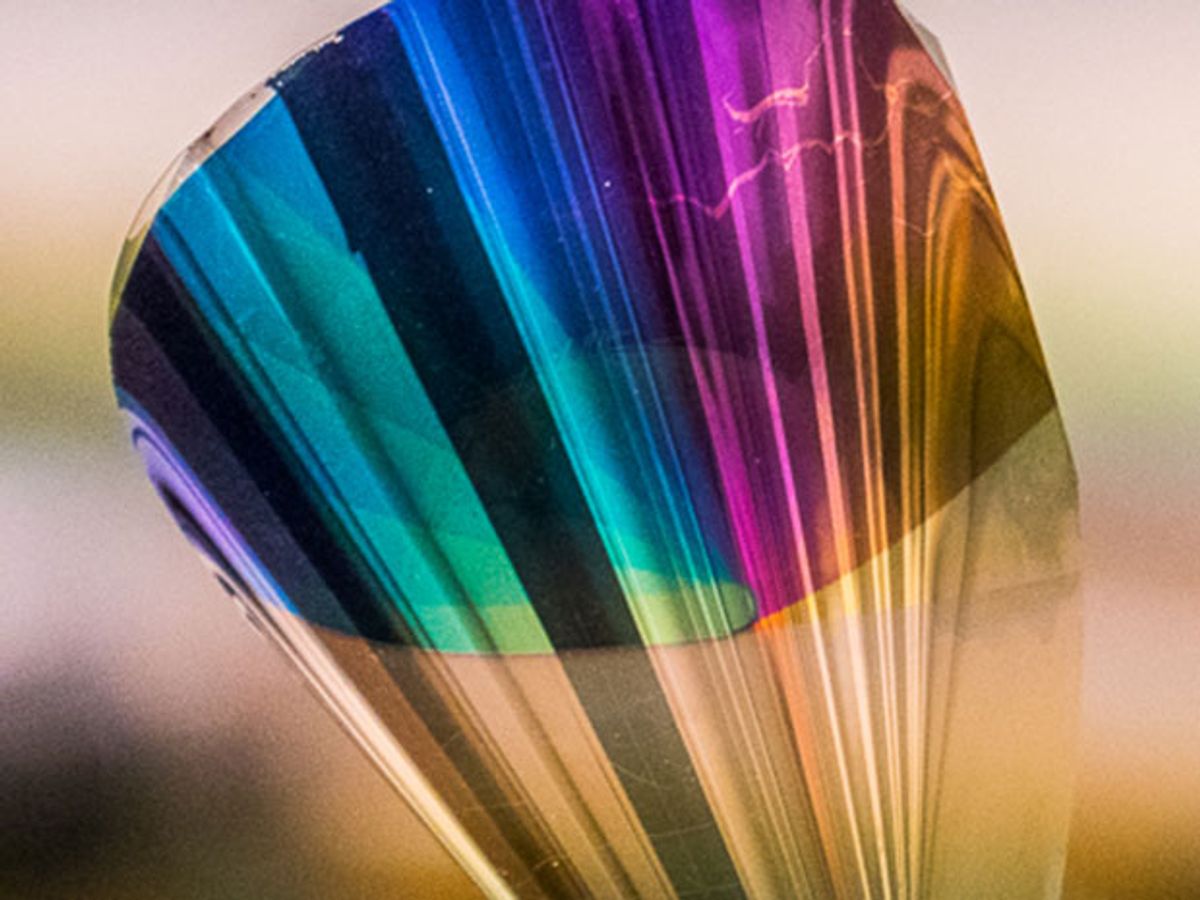Plasmonic nanostructures leverage the oscillations in the density of electrons that are generated when photons hit a metal surface. Researchers have used these structures for applications including increasing the light absorption of solar cells and creating colors without the need for dyes. As a demonstration of how effective these nanostructures are as a replacement for color dyes, a the technology has been used to produce a miniature copy of the Mona Lisa in a space smaller than the footprint taken up by a single pixel on an iPhone Retina display.
It has also been shown that if you combine these plasmonic nanostructures with electrochromic polymers that change color when a voltage is applied—the kind used in windows that can be turned from clear to opaque with a flip of a switch—you can make a display.
Now researchers at Chalmers University of Technology, in Göteborg, Sweden, have used these plasmonic nanostructures in combination with a electrochromic polymer to create a micrometer-thin display capable of rendering all the colors of traditional light-emitting diode (LED) displays. What’s more, it does so on one-tenth the energy needed to run a Kindle.
In research described in the journal Advanced Materials, the Chalmers researchers overcame the poor contrast provided by these conjugated polymers by combining the material with the plasmonic nanostructures. This allowed them to electrically modulate the reflective colors of the material. And because the optical absorption of the conducting polymer is electrically controllable, it is used to modulate the reflected light from the ultrathin plasmonic nanostructures.
The plasmonic nanostructures consist of three solid films. First, a 150-nanometer-thick silver film is deposited on the substrate to provide a high-base reflection. Then an alumina spacer layer is used to tune the reflective color. Finally, nanoholes are arranged into a 20-nm-thick gold film. By altering the thickness of the alumina spacer layer from 40 to 95 nm, the researchers found that they could produce the primary colors of red, green and blue.
The polymer that covers entire surface of the material channels the electrical signals throughout the display to produce the high-resolution images.
“The ’paper’ is similar to the Kindle tablet,” said Andreas Dahlin, an assistant professor at Chalmers and co-author of the paper, in a press release. “It isn’t lit up like a standard display, but rather reflects the external light which illuminates it. Therefore it works very well where there is bright light, such as out in the sun, in contrast to standard LED displays that work best in darkness. At the same time, it needs only a tenth of the energy that a Kindle tablet uses, which itself uses much less energy than a tablet LED display.”
The researchers concede that the material is not going to be ready for commercial applications in the immediate future. They’ve yet to produce anything beyond a device comprising just a few pixels of red, green, and blue. The challenge will be to build enough pixels to cover an entire display area.
Dahlin added: “We are working at a fundamental level, but even so, the step to manufacturing a product out of it shouldn’t be too far away. What we need now are engineers.”
Dexter Johnson is a contributing editor at IEEE Spectrum, with a focus on nanotechnology.



